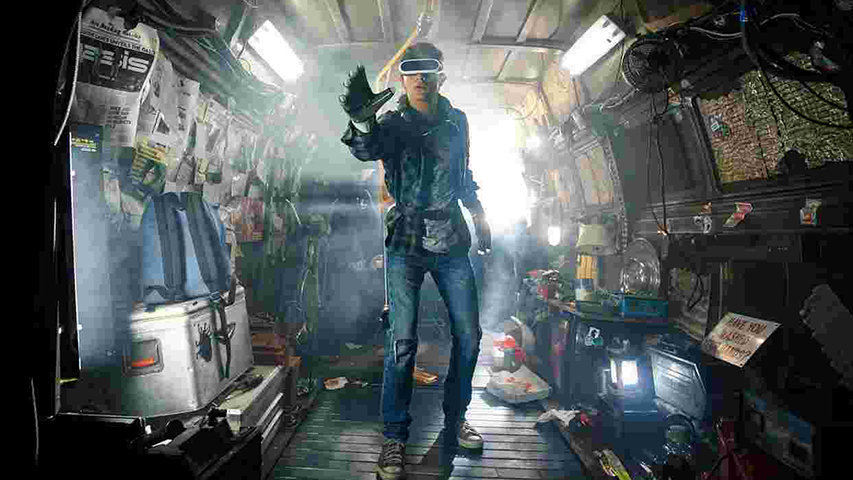
Spielberg Knows How to Hit the Nostalgia Bone Just Right
by Yash Saboo April 5 2018, 3:55 pm Estimated Reading Time: 3 mins, 25 secsSteven Spielberg is an extraordinary director. For anyone whose actual childhood has been marked by Steven Spielberg films about childhood—who has watched it emerge and re-emerge as one of his inescapable obsessions—these will always feel like the most Spielbergian species of Spielberg film.
By now you probably know that Spielberg's latest, Ready Player One, features cameos from a number of famous movie monsters, including the T. rex from Jurassic Park, whose appearance gives Steven Spielberg a chance to playfully pat himself on the back. He’s done stuff like this before: In the opening scene of 1941, a beautiful young woman arrives at the beach at dusk and jumps into the surf before the two-note Jaws score begins. She’s then “attacked” not by a great white shark but a surfacing submarine, which lifts her out of the water as she clings to the periscope—a pretty funny sight gag even if it’s a bit on the juvenile side.

Source : USA Today
So, the thing is, Spielberg knows exactly how to hit the nostalgia bones of his movie viewers. He has always been exceptionally choosy about what he directs. No matter how different his films, they all begin with the same, almost supernatural tingle of predestination when he first reads the script. “I call it That Old Familiar Feeling,” he says. He refuses to trust it at first. “It’s the only way I can test how emotionally involved I want to be. I’m getting married to a movie. I’ve got to know it’s true love. And every time I read the script again, I say, ‘This read—this time around—I’m going to find the fatal flaw that will turn me away from this.’ And when I can’t find it, I throw my hands up in the air, and I say, ‘I surrender, dear!’”
“Nostalgia does not have eternal life,” Spielberg says. “I use nostalgia when I’m in a bad situation, when I’m feeling stressed, or when the world is an ugly place to read about or to watch on television. I use nostalgia to escape. But my own kids are not nostalgic in the same way. They’re nostalgic if something is trending. And then they’ll go back and look it up and learn about something that happened a long time ago.” He’s realistic, in a cheerful way, about the fate of older folks’ treasured cultural totems: “Social media is keeping people pretty much focused on the present,” he says. “Social media may be the beta blocker to nostalgia.”
Like its source material, Ready Player One–adapted by Cline and Zak Penn–is packed with cultural references from the 20th century, and from the 1980s in particular. King Kong, the climactic dance sequence of Saturday Night Fever, Van Halen’s “Jump,” the Iron Giant: if you’ve watched a movie or even just sifted through Spotify anytime in the past 90 years, you’re sure to recognize something. But you don’t have to get all, or even any, of the references to enjoy the movie. Spielberg purposely constructed Ready Player One so that “the story is straight ahead out your front windshield, and the nostalgia, if you care to glance at it, is out the right and the left windows of this vehicle we’ve put you in, the one that’s racing you to the finish line,” he says. “The nostalgia is there if it has some value for you, but nostalgia is not essential in understanding the story we’re telling.” Spielberg loves technology, and he loves using new techniques to tell stories. But he’s also wedded to the basics of classic filmmaking. I think that's probably why his films are loved by all.




-173X130.jpg)
-173X130.jpg)
-173X130.jpg)




-173X130.jpg)